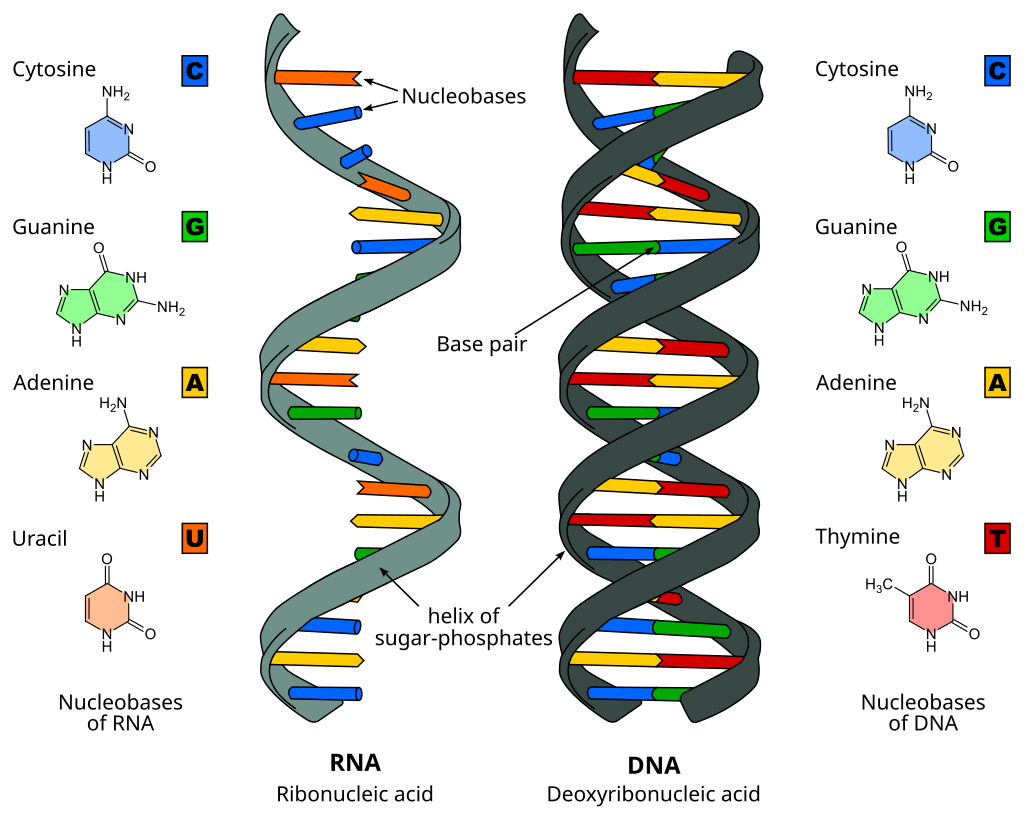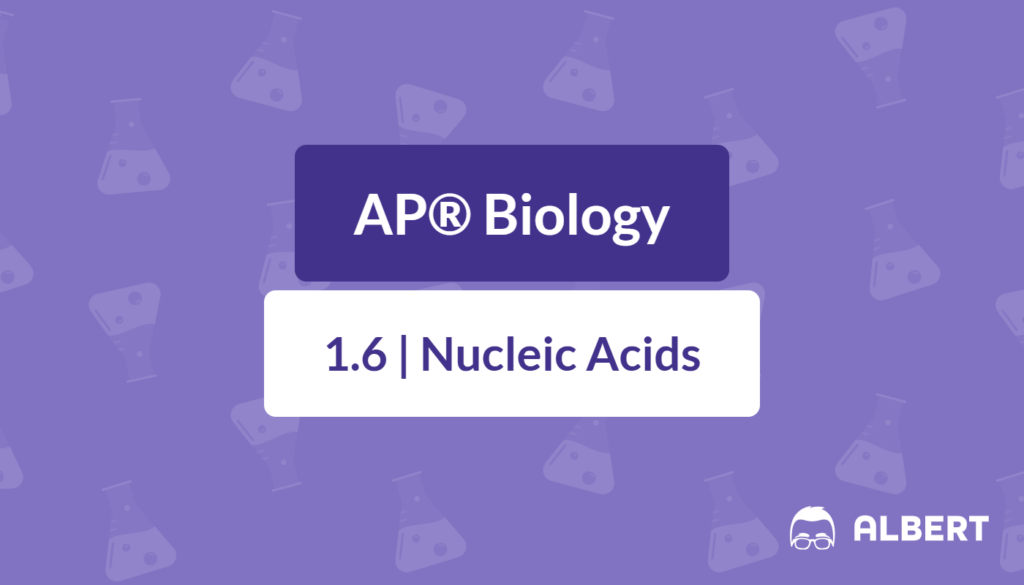What We Review
Introduction
DNA and RNA are the fundamental molecules that form the basis of all living organisms. They hold the genetic instructions that guide everything from cell growth to protein creation, making them crucial topics for any AP® Biology student. This article explores DNA vs. RNA, highlighting key similarities and differences to enhance your exam prep and appreciation of these remarkable nucleic acids.
Overview of Nucleic Acids
Nucleic acids are large biomolecules responsible for storing and transmitting genetic information. They consist of monomers called nucleotides, each made up of a sugar, a phosphate group, and a nitrogenous base. DNA (deoxyribonucleic acid) and RNA (ribonucleic acid) are the two main types of nucleic acids found in cells. Understanding the difference between DNA and RNA can help clarify how genes are expressed and regulated.
Similarities Between DNA and RNA
Common Structural Features
- Nucleotides: Both DNA and RNA are composed of nucleotides containing a sugar, a phosphate group, and a nitrogenous base.
- Linear Molecules: When these nucleotides connect, they form long, linear chains important for storing and transferring genetic information.
Key Differences Between DNA and RNA

Structural Differences
- Sugar Component
- Deoxyribose vs. Ribose: The sugar in DNA nucleotides is deoxyribose, while the sugar in RNA nucleotides is ribose. This might lead you to wonder: “Why do DNA and RNA have different sugars?” One major reason is stability—DNA’s deoxyribose lacks a hydroxyl group (–OH) at the 2′ carbon, making it more chemically stable. RNA’s ribose sugar includes this hydroxyl group, making RNA more reactive and suitable for varied tasks like protein synthesis and regulation.
- Nitrogenous Bases
- Thymine vs. Uracil: DNA uses the nitrogenous base thymine (T), whereas RNA substitutes uracil (U) in place of thymine. This small change helps enzymes in the cell distinguish between DNA and RNA during replication and transcription.
- Strand Structure
- Double-Stranded vs. Single-Stranded: The most recognizable structural difference between DNA and RNA is that DNA typically forms a double-stranded helix, while RNA usually remains single-stranded. Double-stranded DNA provides stability and protection for genetic information, whereas single-stranded RNA allows for versatile folding patterns necessary for its multiple functions.
Directionality of Strands
Antiparallel Arrangement: DNA’s two strands run in opposite directions (antiparallel), one strand in the 5′ → 3′ direction and the other 3′ → 5′. This arrangement is critical for accurate replication and proofreading.
Functional Implications of Structural Differences
- DNA’s Double Helix: The double-stranded nature of DNA helps maintain the integrity of the genetic code through replication and repair. This stability is essential for long-term information storage in cells.
- RNA’s Versatile Roles: RNA’s single-stranded, more reactive nature allows it to function in diverse processes such as protein synthesis (mRNA, rRNA, tRNA), gene regulation (microRNA), and enzymatic activities (ribozymes).
Summary of Key Points
- Both DNA and RNA are nucleic acids composed of nucleotides.
- DNA contains deoxyribose sugar and thymine, while RNA contains ribose sugar and uracil.
- DNA typically forms a stable, double-stranded structure, while RNA usually exists as a single strand and is more reactive.
- These structural differences underlie each molecule’s unique functions in cells—DNA stores genetic information while RNA helps decode and regulate it.
Practice Questions
- What are the three main components of a nucleotide, and how do they form a linear molecule?
- Why do DNA and RNA have different sugars, and how does this affect their stability?
- Describe one functional advantage of DNA being double-stranded.
- Compare and contrast thymine and uracil. Why might having distinct bases be beneficial?
- Explain how RNA’s single-stranded nature allows it to take on multiple roles in the cell.
Conclusion
The study of DNA vs RNA can feel daunting, but remember that each concept you learn builds a foundation for understanding life at its most fundamental level. By focusing on the structural and functional differences between these molecules, you’ll not only be ready for your AP® Biology exam but also gain deeper insights into how cells operate and evolve. Keep exploring, stay curious, and trust in your ability to master these essential topics!
Best of luck with your studies, and remember that every little bit of practice and review will pay off as you approach your AP® Biology exam!
Sharpen Your Skills for AP® Biology
Are you preparing for the AP® Biology test? We’ve got you covered! Try our review articles designed to help you confidently tackle real-world math problems. You’ll find everything you need to succeed, from quick tips to detailed strategies. Start exploring now!
Need help preparing for your AP® Biology exam?
Albert has hundreds of AP® Biology practice questions, free response, and full-length practice tests to try out.








